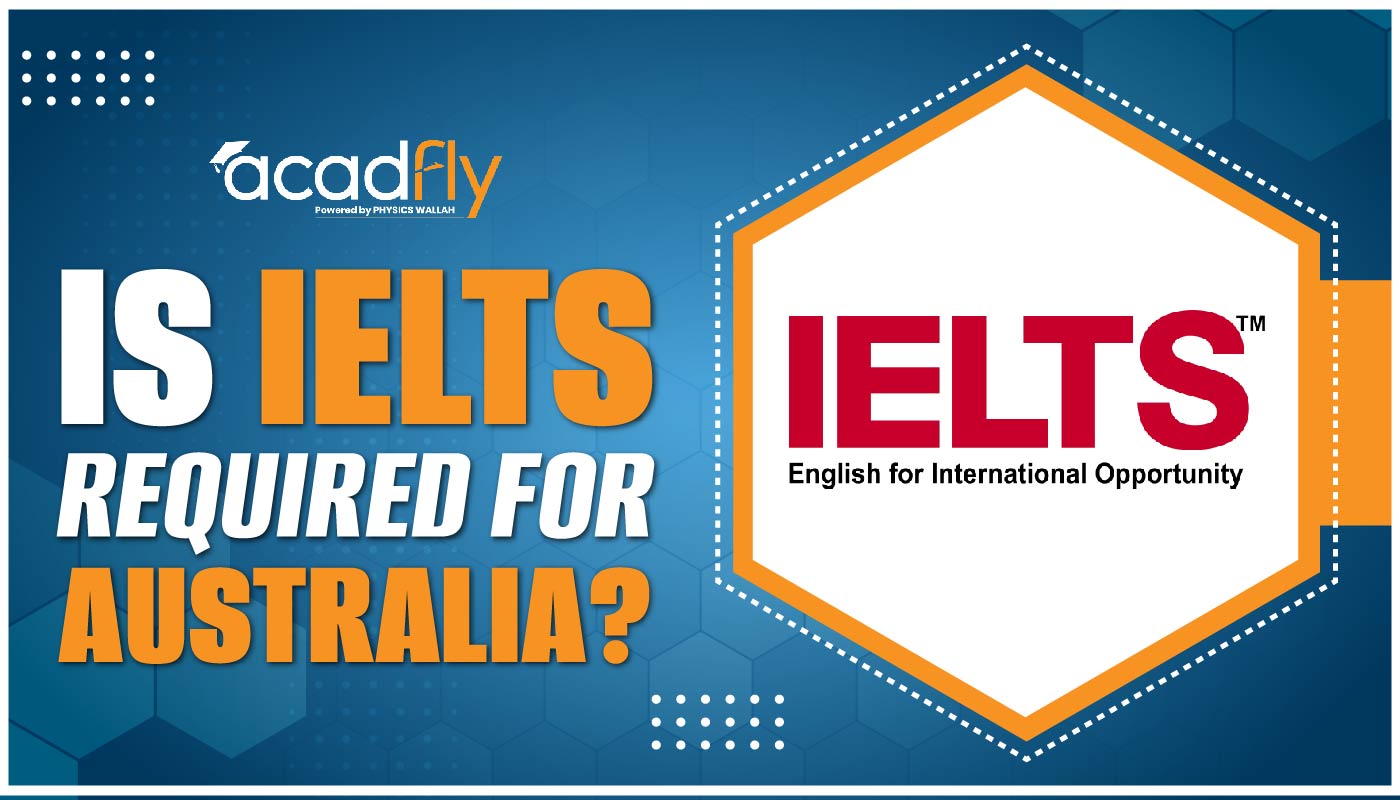

Choosing between the IELTS (International English Language Testing System) and TOEFL (Test of English as a Foreign Language) can be challenging for students aiming to study abroad. Both tests are widely recognized and accepted by universities worldwide. However, understanding their differences, formats, scoring, and suitability for specific academic or professional goals is crucial. This comprehensive guide will look into the key aspects of IELTS vs TOEFL, helping you decide which test to take in 2025.
Overview of IELTS and TOEFL
IELTS
IELTS is an internationally recognized English proficiency test designed to assess the language abilities of non-native speakers. It is jointly managed by the British Council, IDP: IELTS Australia, and Cambridge Assessment English.
-
Versions: Academic and General Training
-
Purpose: Academic and professional
-
Acceptance: Widely accepted by universities, employers, and immigration authorities in the UK, Australia, Canada, and New Zealand
TOEFL
TOEFL is an English proficiency test administered by the Educational Testing Service (ETS) and is primarily used for academic purposes.
-
Versions: TOEFL iBT (Internet-based Test) and TOEFL PBT (Paper-based Test)
-
Purpose: Academic
-
Acceptance: Widely accepted by universities in the USA, Canada, Australia, and many other countries
Key Differences Between IELTS and TOEFL
Test Format
|
Aspect |
IELTS |
TOEFL |
|
Versions |
Academic, General Training |
iBT, PBT |
|
Test Sections |
Listening, Reading, Writing, Speaking |
Reading, Listening, Speaking, Writing |
|
Test Duration |
2 hours 45 minutes |
3 hours |
|
Test Mode |
Paper-based, Computer-delivered |
Internet-based, Paper-based |
Test Sections
Listening
IELTS Listening:
-
Duration: 30 minutes
-
Format: 4 sections, 40 questions
-
Content: Conversations and monologues
TOEFL Listening:
-
Duration: 41-57 minutes
-
Format: 3-4 lectures, 2-3 conversations
-
Content: Academic lectures, campus conversations
Reading
IELTS Reading:
-
Duration: 60 minutes
-
Format: 3 sections, 40 questions
-
Content: Academic texts for Academic IELTS; general texts for General Training
TOEFL Reading:
-
Duration: 54-72 minutes
-
Format: 3-4 passages, 30-40 questions
-
Content: Academic texts
Writing
IELTS Writing:
-
Duration: 60 minutes
-
Format: 2 tasks
-
Content: Task 1 (describe visual information); Task 2 (essay writing)
TOEFL Writing:
-
Duration: 50 minutes
-
Format: 2 tasks
-
Content: Integrated task (read, listen, write); Independent task (essay writing)
Speaking
IELTS Speaking:
-
Duration: 11-14 minutes
-
Format: Face-to-face interview
-
Content: Introduction, long turn, discussion
TOEFL Speaking:
-
Duration: 17 minutes
-
Format: 6 tasks (4 integrated, 2 independent)
-
Content: Speaking into a microphone, recorded responses
Scoring System
|
Aspect |
IELTS |
TOEFL |
|
Score Range |
0-9 bands |
0-120 points |
|
Individual Scores |
Each section scored 0-9 |
Each section scored 0-30 |
|
Overall Score |
Average of four sections |
Sum of four sections |
|
Score Validity |
2 years |
2 years |
Test Availability and Frequency
IELTS:
-
Availability: Multiple times a month, at various locations worldwide
-
Booking: Available year-round
TOEFL:
-
Availability: Over 50 test dates a year, at various locations worldwide
-
Booking: Available year-round
IELTS vs TOEFL: Which One to Pick?
Academic Preferences
When deciding IELTS vs TOEFL: Which one to pick?, consider the preferences of your target institutions. Some universities may prefer one test over the other. For example, many institutions in the USA favor TOEFL scores, while those in the UK, Australia, and New Zealand may prefer IELTS.
Test Format Preference
Your comfort with the test format is another crucial factor. If you prefer a face-to-face speaking test, IELTS might be more suitable. Conversely, if you are more comfortable speaking into a microphone, TOEFL could be the better choice.
English Proficiency Focus
Consider which test aligns better with your strengths. IELTS is known for its British English orientation and diverse question formats, while TOEFL is more aligned with American English and features more academic language use.
Preparation Resources
Both tests have abundant preparation resources, but the availability of these resources in your region and your access to them might influence your decision.
Cost Comparison
IELTS Fees
|
Region |
Average Cost (USD) |
|
North America |
$215 - $250 |
|
Europe |
$240 - $275 |
|
Asia |
$180 - $250 |
|
Australia |
$340 - $370 |
TOEFL Fees
|
Region |
Average Cost (USD) |
|
North America |
$180 - $210 |
|
Europe |
$220 - $260 |
|
Asia |
$160 - $250 |
|
Australia |
$300 - $330 |
Pros and Cons of IELTS and TOEFL
IELTS
Pros:
-
Face-to-face speaking test: Many find it more interactive and less stressful.
-
Variety of question types: Keeps the test engaging and tests a range of skills.
-
Widely accepted: Particularly in the UK, Australia, and New Zealand.
Cons:
-
British English bias: Can be challenging for those more familiar with American English.
-
Test day length: Can be exhausting due to its comprehensive nature.
TOEFL
Pros:
-
American English focus: Beneficial for those targeting US institutions.
-
Integrated tasks: Simulate real academic scenarios, providing practical language use.
-
Computer-based: Preferred by those who are comfortable with technology.
Cons:
-
Speaking into a microphone: Can be intimidating for some test-takers.
-
Long reading passages: Can be challenging and time-consuming.
Test Preparation Tips
IELTS Preparation
-
Understand the Format: Familiarize yourself with the test structure and types of questions.
-
Practice Listening: Use a variety of British English resources, such as podcasts and news programs.
-
Improve Speaking: Practice with a partner or take mock interviews.
-
Enhance Writing Skills: Practice writing essays and descriptions of visual data.
-
Read Widely: Engage with academic texts and articles.
TOEFL Preparation
-
Understand the Format: Get to know the test structure and question types.
-
Practice Listening: Use American English resources, such as lectures and radio shows.
-
Improve Speaking: Practice speaking responses into a microphone.
-
Enhance Writing Skills: Focus on writing essays and summarizing information.
-
Read Widely: Engage with academic texts and practice reading comprehension.
Conclusion
Choosing between IELTS vs TOEFL depends on various factors, including your academic goals, test format preference, and comfort with the English variety. Both tests are widely accepted and offer numerous resources for preparation. By understanding the differences and aligning them with your strengths and needs, you can make an informed decision and excel in your chosen test.
For those preparing for English proficiency tests, AcadFly offers comprehensive guidance and resources. Whether you choose IELTS or TOEFL, AcadFly provides personalized support to help you achieve your best score. Explore the opportunities and resources available at AcadFly to take the next step in your academic journey.
FAQs
1. Which test is more widely accepted, IELTS or TOEFL?
Both IELTS and TOEFL are widely accepted by universities and institutions worldwide. However, IELTS is often preferred in the UK, Australia, and New Zealand, while TOEFL is more commonly accepted in the USA.
2. How do the test formats of IELTS and TOEFL differ?
IELTS includes face-to-face speaking tests and a variety of question types across listening, reading, writing, and speaking sections. TOEFL is primarily computer-based, with speaking responses recorded into a microphone and a strong emphasis on academic English.
3. What are the typical costs for taking the IELTS and TOEFL tests?
The cost for IELTS ranges from $180 to $370, depending on the region. TOEFL fees typically range from $160 to $330, also varying by region.
4. Which test should I take if I am more comfortable with British English?
If you are more comfortable with British English, IELTS might be the better choice for you as it primarily uses British English in its tests.
5. How long are the scores valid for IELTS and TOEFL?
Both IELTS and TOEFL scores are valid for two years from the test date.
Frequently Asked Questions









